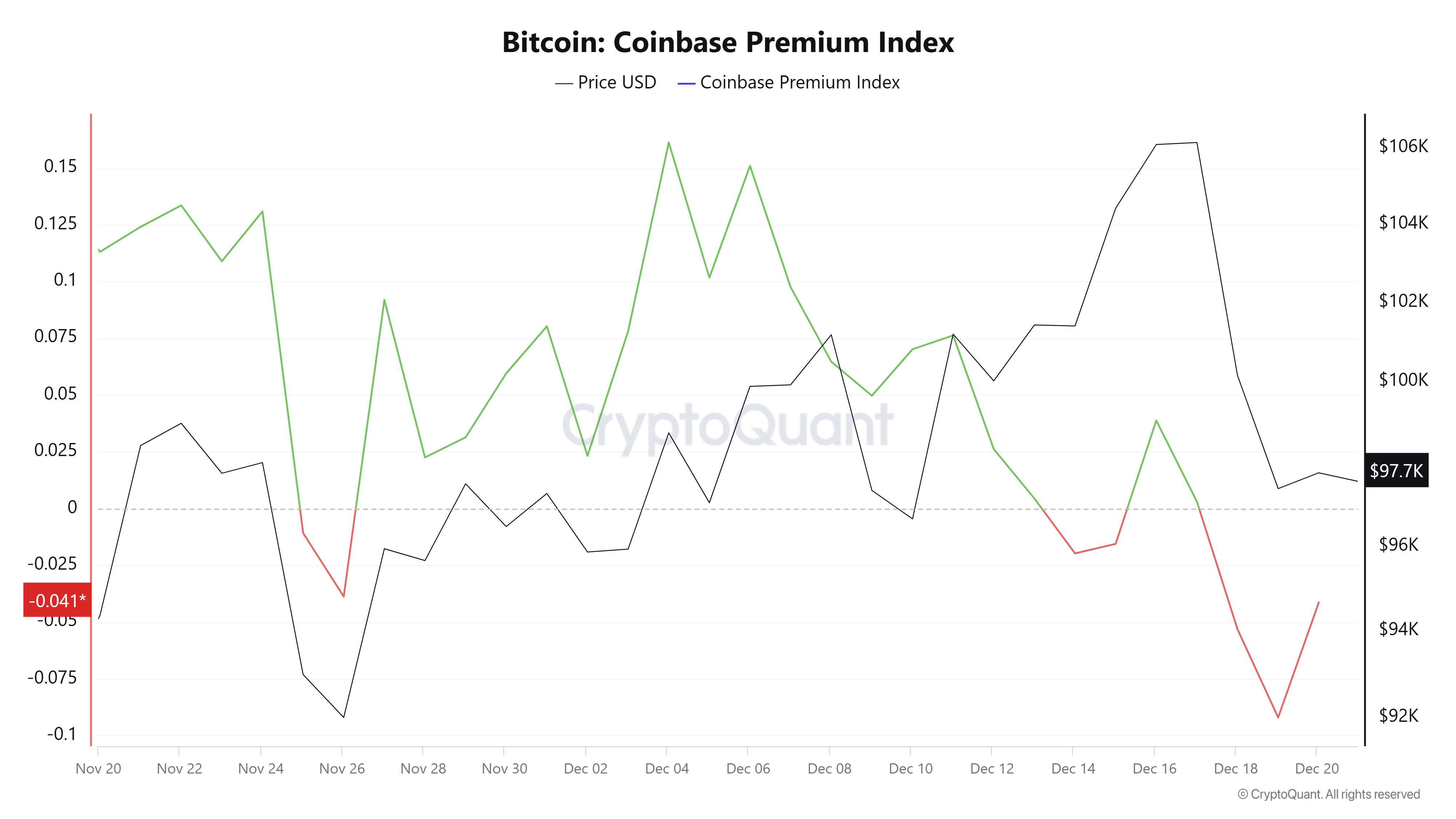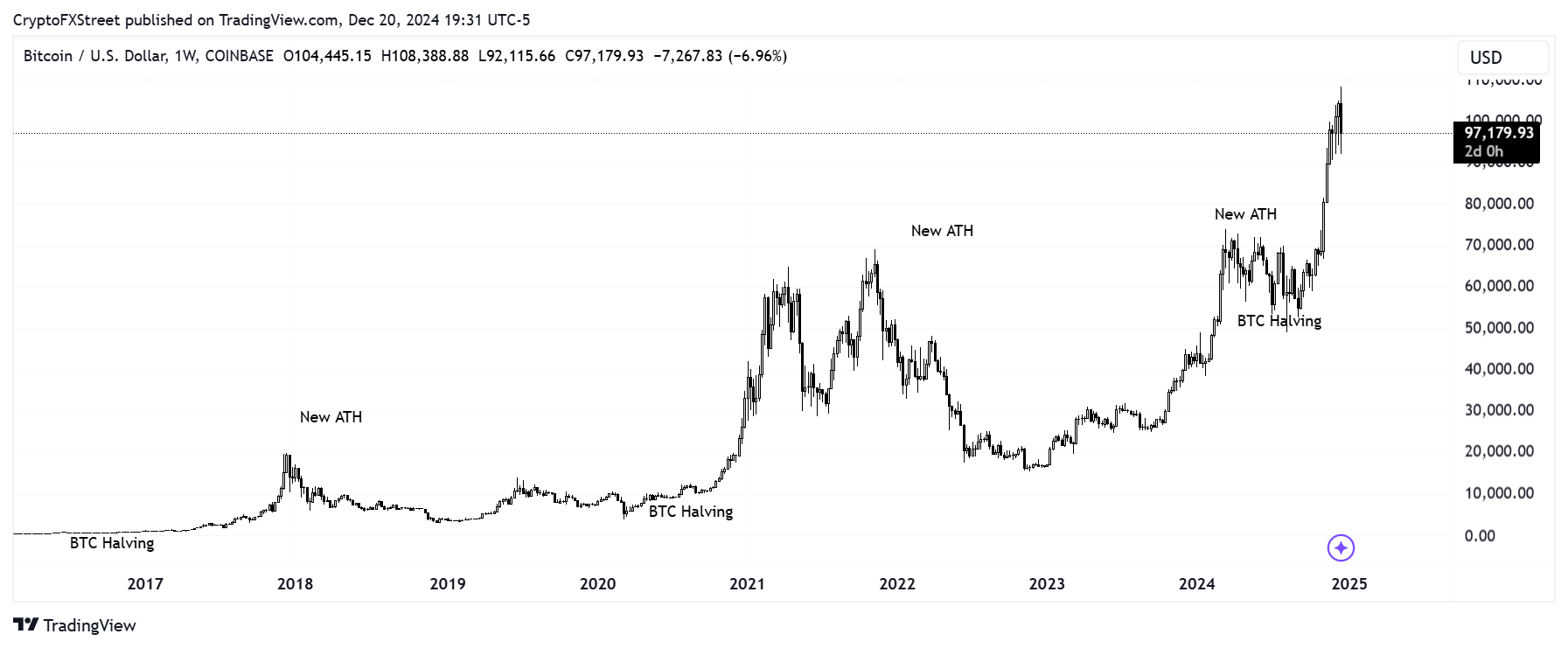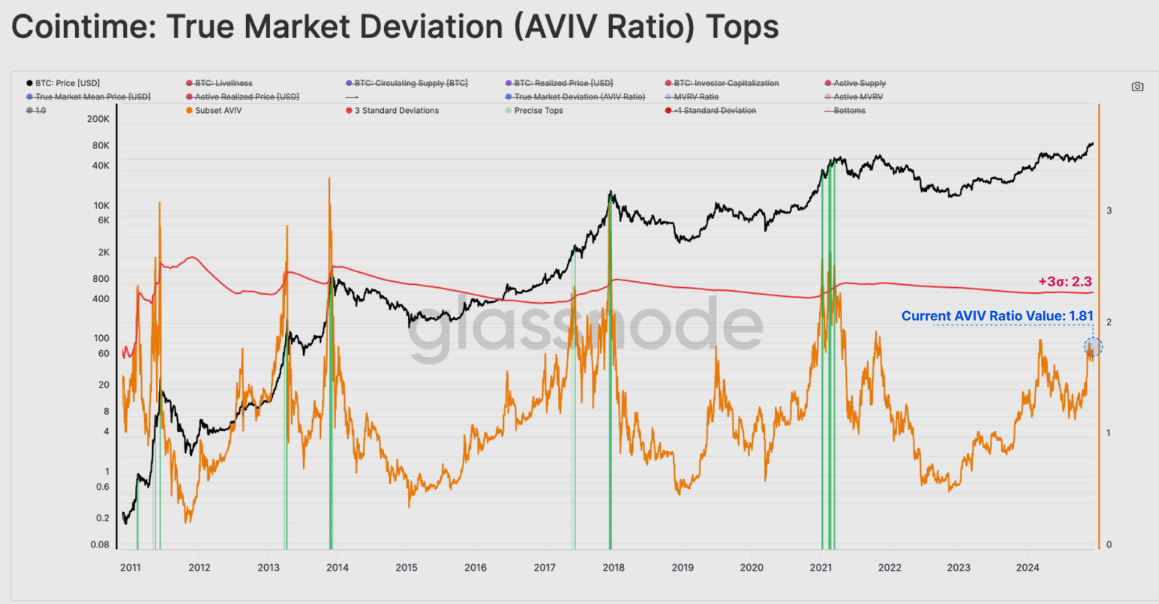Physical Address
304 North Cardinal St.
Dorchester Center, MA 02124
Physical Address
304 North Cardinal St.
Dorchester Center, MA 02124

Bitcoin (BTC) traded near $97,000 on Friday after a recent correction saw the cryptocurrency lose over 5% of its total market capitalization. Despite the bearish sentiment currently dominating the market, several key factors suggest that BTC may not have topped the current market cycle.
After hitting a high of $108,300 earlier in the week, Bitcoin fell on Wednesday following the FOMC’s hawkish outlook for rate cuts in 2025. The Fed’s decision to have just two rate cuts next year dashed market participants’ expectations of four rate cuts, which led to strong selling pressure on the crypto market.
In particular, US investors were among the biggest sellers, as revealed in the drop in the Bitcoin Coinbase premium. This metric measures the difference between Coinbase’s BTC/USD pair and Binance’s pair. The decline shows more selling pressure in the US than in the general market.

Bitcoin Coinbase Premium Index. Source: CryptoQuant
With the recent decline from the all-time high, most investors are wondering if Bitcoin’s bull season is over. The following factors reveal mixed signals:
Historically, Bitcoin operates according to a four-year market cycle pattern that begins with an accumulation, a bull market, a distribution, and a bear market. Bitcoin could extend its ascent into 2025 before establishing a price ceiling if the current market cycle follows this pattern. In addition, market participants’ expectations that the cycle repeats this trend could lead to a self-fulfilling prophecy.
Conversely, although Bitcoin has shown some synergy with previous cycles, there are certain characteristics of the dynamics of change in the current cycle. Bitcoin has historically reached new highs, on average, a year after a halving.
This pattern repeated itself in the 2015-2018 cycle, when the price of Bitcoin jumped to a new high in August 2017 after the 2016 halving.
Similarly, in the 2019-2022 cycle, its price rose to new highs in November 2021, one year after the 2020 halving event. However, this trend was reversed in the current cycle after BTC reached a new ATH in March before halving in April.
This presents investors with two options: either the halving event is no longer a benchmark for Bitcoin’s price trajectory, or BTC has yet to experience growth following the halvings of previous cycles.

BTC/USD Weekly Chart (Coinbase)
Spot Bitcoin ETFs have been instrumental in Bitcoin’s price performance since their approval in January, leading to massive institutional adoption.
These new ETF investors could also change the dynamics of Bitcoin’s market cycle, as evidenced by how they pushed Bitcoin to all-time highs before its most recent halving.
Unlike traditional crypto investors who operate in high volatility environments, institutional investors using ETFs benefit from operational efficiency and reduced custody risks. This is a key factor to watch as the bulls and bears battle to determine the next price direction.
Despite market top fears, Glassnode’s AVIV metric shows that Bitcoin still has room to grow. The AVIV ratio measures the average unrealized profit or paper profit held by active investors in the market.
According to Glassnode analysts, bull markets end when most investors are highly profitable, creating an excess supply and a shortage of buyers. The metric has yet to reach the highs of previous cycles, suggesting that investors have yet to start making extreme profits as prices rise.

BTC AVIV Glassnode. Source: Glassnode
A similar sentiment was expressed by Michael Nadeau in The DeFi Report, suggesting that the decline in Bitcoin’s price is a necessary pullback. He expects short-term consolidation before the market resumes its upward trajectory.
Likewise, Santiment data revealed that the buying trend among market participants rose to the highest level in 8 months, signaling increased enthusiasm for the market’s recovery.
With Bitcoin falling to as low as $95.5k today, the ratio of crypto discussions going on down to buy cryptocurrencies has reached its highest level in over 8 months. The last time we saw a crowd nearly this enthusiastic about buying a dip was the big dip on August 4th. Of… pic.twitter.com/39NlpnGMCs
— Santiment (@santimentfeed) December 20, 2024
Upbeat sentiment surrounding the incoming administration of US President-elect Donald Trump could also be the catalyst to ensure Bitcoin completes its cycle by reaching new highs in 2025. Much of the positive sentiment is fueled by expected regulatory changes favoring the digital asset along with the Securities and Exchange Commission. and Stock Exchange (SEC) Resignation of Chairman Gary Gensler on January 20.